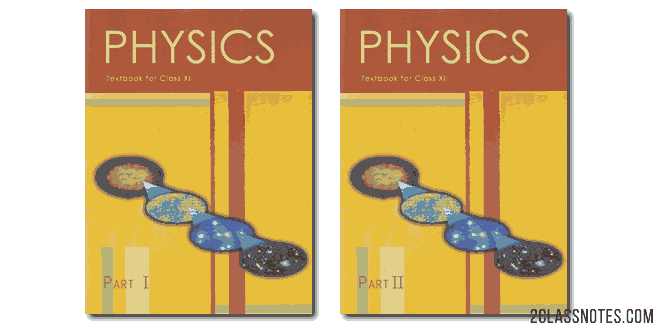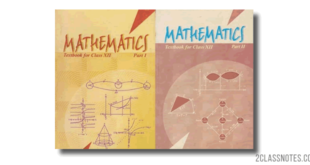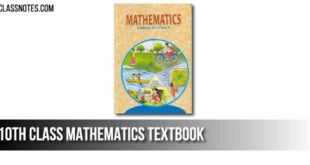CBSE Class 12th Physics Syllabus 2024-25: Download the CBSE Class 12th Physics Syllabus for the academic session 2024-25 here. Check out the complete syllabus to know the list of topics and exam pattern prescribed by CBSE for Class 12 Physics.
CBSE Class 12th Physics Syllabus 2024-25: The Central Board of Secondary Education (CBSE) Senior Secondary (Class 12) Physics syllabus has been released. Students can directly access the Class 12 Physics syllabus in this article. Students can check and download their CBSE Class 12 Physics revised syllabus and complete curriculum here. Along with the details of the course content, students can also check the question paper design, practical details, and evaluation scheme. The link to download the syllabus in PDF format has also been attached at the end of this article.
CBSE Class 12th Physics Course Structure
CBSE Class 12th Physics has nine units. The table below reflects the unit, chapters, along with the number of periods and mark allocation to the chapters. Refer to the table below for more understanding:
| Unit | Chapters | No. of Periods | Marks |
|---|---|---|---|
| Unit 1 | Electrostatics | 26 | 16 |
| Chapter 1: Electric Charges and Fields | |||
| Chapter 2: Electrostatic Potential and Capacitance | |||
| Unit 2 | Current Electricity | 18 | |
| Chapter 3: Current Electricity | |||
| Unit 3 | Magnetic Effects of Current and Magnetism | 25 | 17 |
| Chapter 4: Moving Charges and Magnetism | |||
| Chapter 5: Magnetism and Matter | |||
| Unit 4 | Electromagnetic Induction and Alternating Currents | 24 | |
| Chapter 6: Electromagnetic Induction | |||
| Chapter 7: Alternating Current | |||
| Unit 5 | Electromagnetic Waves | 04 | 18 |
| Chapter 8: Electromagnetic Waves | |||
| Unit 6 | Optics | 30 | |
| Chapter 9: Ray Optics and Optical Instruments | |||
| Chapter 10: Wave Optics | |||
| Unit 7 | Dual Nature of Radiation and Matter | 08 | 12 |
| Chapter 11: Dual Nature of Radiation and Matter | |||
| Unit 8 | Atoms and Nuclei | 15 | |
| Chapter–12: Atoms | |||
| Chapter–13: Nuclei | |||
| Unit 9 | Electronic Devices | 10 | 7 |
| Chapter 14: Semiconductor Electronics: Materials, Devices and Simple Circuits | |||
| Total | 160 | 70 |
Unit I: Electrostatics
Chapter 1: Electric Charges and Fields
- Electric charges, Conservation of charge, Coulomb’s law-force between two- point charges, forces between multiple charges; superposition principle and continuous charge distribution. Electric field, electric field due to a point charge, electric field lines, electric dipole, electric field due to a dipole, torque on a dipole in uniform electric field. Electric flux, statement of Gauss’s theorem and its applications to find field due to infinitely long straight wire, uniformly charged infinite plane sheet and uniformly charged thin spherical shell (field inside and outside).
Chapter 2: Electrostatic Potential and Capacitance
- Electric potential, potential difference, electric potential due to a point charge, a dipole and system of charges; equipotential surfaces, electrical potential energy of a system of two-point charges and of electric dipole in an electrostatic field. Conductors and insulators, free charges and bound charges inside a conductor. Dielectrics and electric polarization, capacitors and capacitance, combination of capacitors in series and in parallel, capacitance of a parallel plate capacitor with and without dielectric medium between the plates, energy stored in a capacitor (no derivation, formulae only).
Unit 2: Current Electricity
Chapter 3: Current Electricity
- Electric current, flow of electric charges in a metallic conductor, drift velocity, mobility and their relation with electric current; Ohm’s law, V-I characteristics (linear and non-linear), electrical energy and power, electrical resistivity and conductivity, temperature dependence of resistance, Internal resistance of a cell, potential difference and emf of a cell, combination of cells in series and in parallel, Kirchhoff’s rules, Wheatstone bridge.
Unit 3: Magnetic Effects of Current and Magnetism
Chapter–4: Moving Charges and Magnetism
- Concept of magnetic field, Oersted’s experiment. Biot – Savart law and its application to current carrying circular loop. Ampere’s law and its applications to infinitely long straight wire. Straight solenoid (only qualitative treatment), force on a moving charge in uniform magnetic and electric fields. Force on a current-carrying conductor in a uniform magnetic field, force between two parallel current-carrying conductors-definition of ampere, torque experienced by a current loop in uniform magnetic field; Current loop as a magnetic dipole and its magnetic dipole moment, moving coil galvanometer- its current sensitivity and conversion to ammeter and voltmeter.
Chapter–5: Magnetism and Matter
- Bar magnet, bar magnet as an equivalent solenoid (qualitative treatment only), magnetic field intensity due to a magnetic dipole (bar magnet) along its axis and perpendicular to its axis (qualitative treatment only), torque on a magnetic dipole (bar magnet) in a uniform magnetic field (qualitative treatment only), magnetic field lines. Magnetic properties of materials- Para-, dia- and ferro – magnetic substances with examples, Magnetization of materials, effect of temperature on magnetic properties.
Unit 4: Electromagnetic Induction and Alternating Currents
Chapter–6: Electromagnetic Induction
- Electromagnetic induction; Faraday’s laws, induced EMF and current; Lenz’s Law, Self and mutual induction.
Chapter–7: Alternating Current
- Alternating currents, peak and RMS value of alternating current/voltage; reactance and impedance; LCR series circuit (phasors only), resonance, power in AC circuits, power factor, wattless current. AC generator, Transformer.
Unit 5: Electromagnetic waves
Chapter–8: Electromagnetic Waves
- Basic idea of displacement current, Electromagnetic waves, their characteristics, their transverse nature (qualitative idea only). Electromagnetic spectrum (radio waves, microwaves, infrared, visible, ultraviolet, X-rays, gamma rays) including elementary facts about their uses.
Unit 6: Optics
Chapter–9: Ray Optics and Optical Instruments
- Ray Optics: Reflection of light, spherical mirrors, mirror formula, refraction of light, total internal reflection and optical fibers, refraction at spherical surfaces, lenses, thin lens formula, lens maker’s formula, magnification, power of a lens, combination of thin lenses in contact, refraction of light through a prism.
- Optical instruments: Microscopes and astronomical telescopes (reflecting and refracting) and their magnifying powers.
Chapter–10: Wave Optics
- Wave optics: Wave front and Huygen’s principle, reflection and refraction of plane wave at a plane surface using wave fronts.
- Proof of laws of reflection and refraction using Huygen’s principle. Interference, Young’s double slit experiment and expression for fringe width (No derivation final expression only), coherent sources and sustained interference of light, diffraction due to a single slit, width of central maxima (qualitative treatment only).
Unit 7: Dual Nature of Radiation and Matter
Chapter–11: Dual Nature of Radiation and Matter
- Dual nature of radiation, Photoelectric effect, Hertz and Lenard’s observations; Einstein’s photoelectric equation-particle nature of light.
- Experimental study of photoelectric effect
- Matter waves-wave nature of particles, de-Broglie relation.
Unit 8: Atoms and Nuclei
Chapter–12: Atoms
- Alpha-particle scattering experiment; Rutherford’s model of atom; Bohr model of hydrogen atom, Expression for radius of nth possible orbit, velocity and energy of electron in his orbit, of hydrogen line spectra (qualitative treatment only).
Chapter–13: Nuclei
- Composition and size of nucleus, nuclear force
- Mass-energy relation, mass defect; binding energy per nucleon and its variation with mass number; nuclear fission, nuclear fusion.
Unit 9: Electronic Devices
Chapter–14: Semiconductor Electronics: Materials, Devices and Simple Circuits
- Energy bands in conductors, semiconductors and insulators (qualitative ideas only) Intrinsic and extrinsic semiconductors- p and n type, p-n junction
- Semiconductor diode – I-V characteristics in forward and reverse bias, application of junction diode -diode as a rectifier.
Practical Evaluation Scheme for Class 12th Physics
The practical examination will be of a three hour duration with a mark allocation of 30 marks in total. Students can find below the evaluation scheme for the practical examination for better understanding:
| Two experiments one from each section | 7+7 Marks |
| Practical record [experiments and activities] | 5 Marks |
| One activity from any section | 3 Marks |
| Investigatory Project | 3 Marks |
| Viva on experiments, activities and project | 5 Marks |
| Total | 30 Marks |
CBSE Class 12th Physics (043) Question Paper Design 2024-25
| Typology of Questions | Total Marks | Approximate % |
| Remembering: Exhibit memory of previously learned material by recalling facts, terms, basic concepts, and answers. Understanding: Demonstrate understanding of facts and ideas by organising, comparing, translating, interpreting, giving descriptions, and stating main ideas. |
27 | 38 |
| Applying: Solve problems to new situations by applying acquired knowledge, facts, techniques and rules in a different way. | 22 | 32 |
| Analysing: Examine and break information into parts by identifying motives or causes. Make inferences and find evidence to support generalisations. Evaluating: Present and defend opinions by making judgments about information, validity of ideas, or quality of work based on a set of criteria. Creating: Compile information together in a different way by combining elements in a new pattern or proposing alternative solutions. |
21 | 30 |
| Total | 70 | 100 |
| Practical | 30 | |
| Gross Total | 100 |
Note: The above template is only a sample. Suitable internal variations may be made for generating similar templates keeping the overall weightage to different form of questions and typology of questions same.
Prescribed Books:
- Physics, Class XII, Part – I and II, Published by NCERT.
- Laboratory Manual of Physics for class XII Published by NCERT.
- The list of other related books and manuals brought out by NCERT (consider multimedia also).
CBSE Class 12th Physics Syllabus 2024 PDF Download
Download CBSE Class 12 Physics Syllabus 2024-25 PDF
 Class Notes NCERT Solutions for CBSE Students
Class Notes NCERT Solutions for CBSE Students






